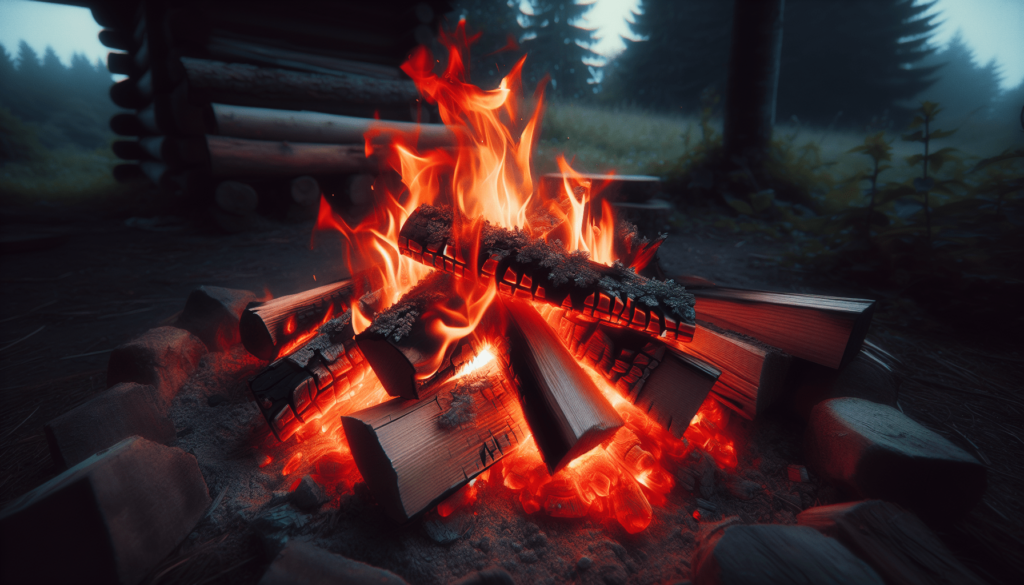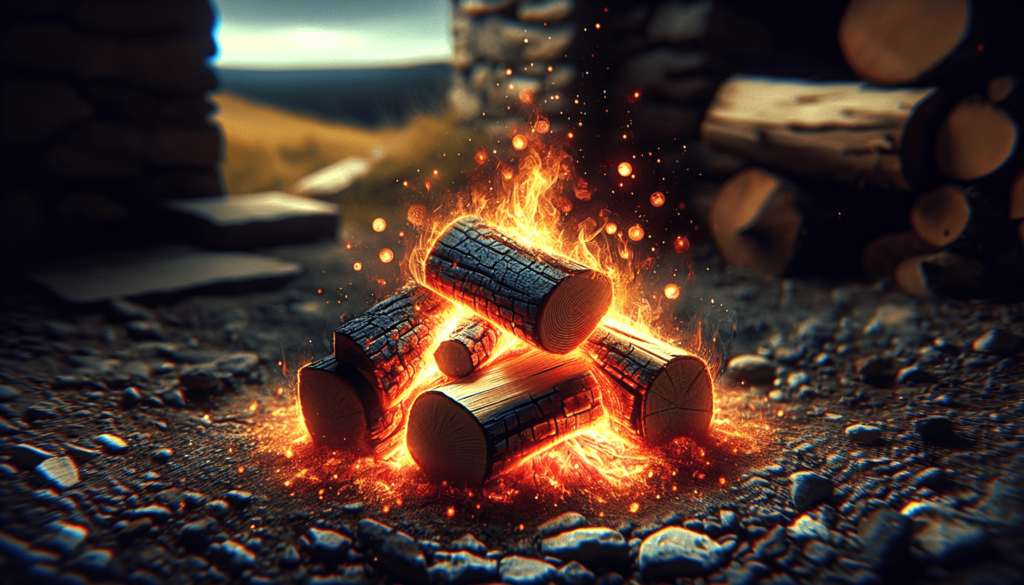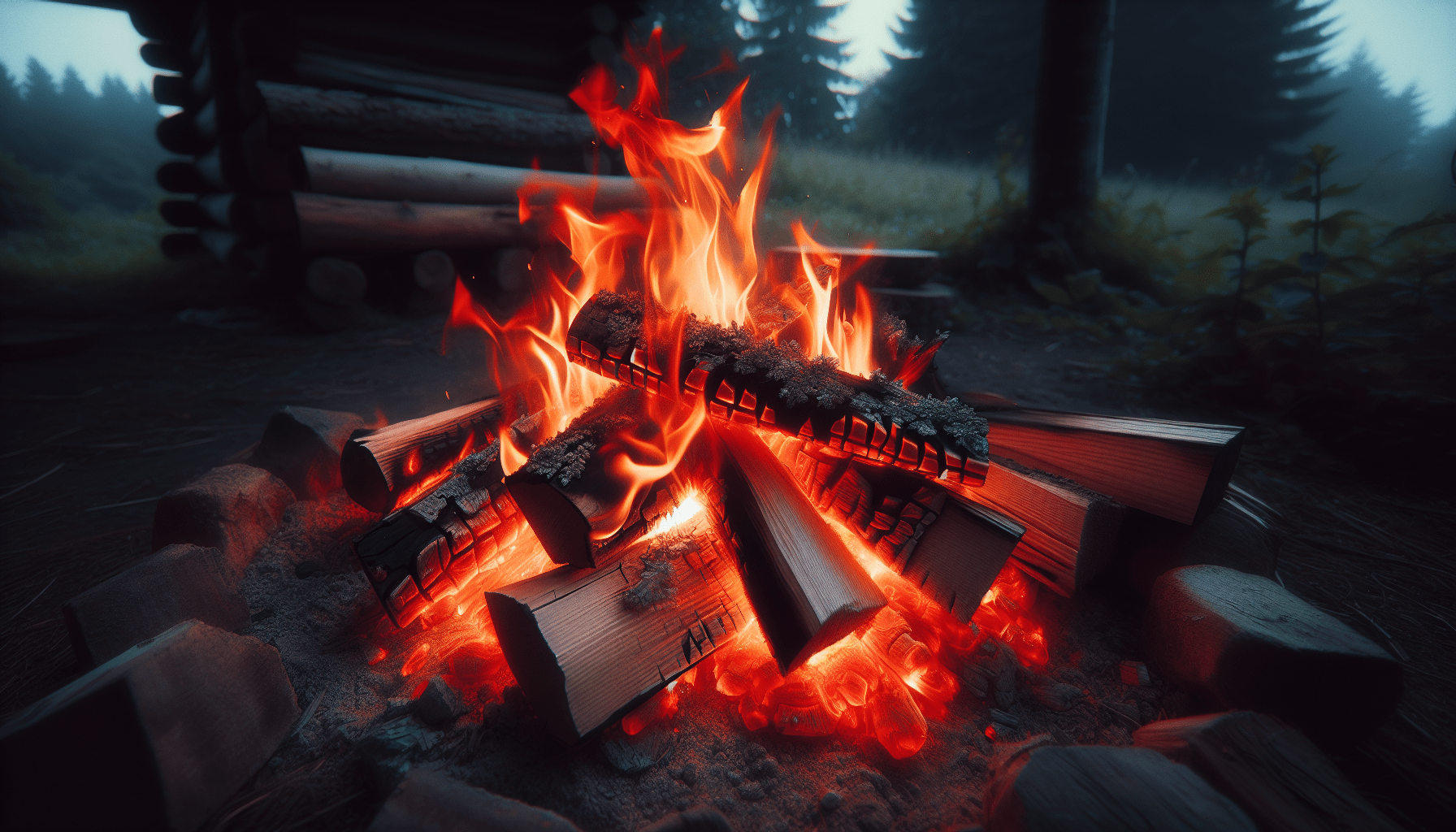What do you call when you burn wood? Have you ever found yourself mesmerized by the flames, the crackle, and the comforting warmth of a fire? I know I have. To truly appreciate the experience, it helps to understand what’s happening on a scientific and practical level. Burning wood is not just a beautiful and nostalgic act; it’s a complex chemical process that has fascinated humans for millennia.

The Basics of Burning Wood
Before we get into the nitty-gritty, let’s start with the basics. Burning wood is more than just lighting a match and watching it go up in flames. At its core, burning wood is a chemical reaction known as combustion. Combustion requires three elements: heat, fuel, and oxygen—often referred to as the fire triangle.
The Fire Triangle
To achieve combustion, these three elements must work together in harmony. Let’s break it down:
- Heat: A certain amount of heat energy is required to initiate the combustion process. This is often provided by a match or lighter in a controlled setting.
- Fuel: In this case, our fuel is wood. The type of wood and its moisture content can significantly affect how it burns.
- Oxygen: Fire needs oxygen from the air to sustain the burning process. Without it, the fire will extinguish.
Each component plays a critical role in the combustion process. If you remove one of these elements, the fire will stop blazing. It’s a simple concept, but it can explain a lot when troubleshooting why your campfire or fireplace isn’t performing as expected.
What Happens When Wood Burns?
Okay, so we’ve sparked the fire, and now it’s burning merrily. What’s actually happening? When wood burns, it goes through a series of stages, each characterized by specific chemical reactions and physical changes.
The Stages of Combustion
-
Drying Phase: Even “seasoned” wood, which has been dried out, contains some moisture. The initial phase involves heating the wood enough to evaporate this moisture. You might notice steam coming off the wood during this phase.
-
Pyrolysis: This is where things start to get interesting. Pyrolysis is the thermal degradation of wood in the absence of oxygen. In simpler terms, the heat causes the wood to chemically decompose into simpler compounds. This process produces gases, tar, and charcoal.
-
Ignition: The gases and tar produced during pyrolysis are highly combustible. When they reach a certain temperature, they ignite, producing visible flames. The ignition of these gases is what most of us recognize as the start of a proper fire.
-
Combustion: This is the main event. During this phase, the generated gases and tars combust, producing light, heat, carbon dioxide, and water vapor. The residual charcoal left behind continues to burn at a slower rate and provides a source of sustained heat.
-
Extinction: Eventually, the fuel becomes depleted, and the fire dies down. The remaining charcoal, ash, and residue indicate that the combustion process has come to an end.
It’s a mesmerizing, intricate ballet of chemistry and physics taking place right before our eyes.
Types of Combustion
Not all combustion is created equal. Depending on the conditions, you might experience different types of combustion.
Complete Combustion
Complete combustion happens when you have plenty of oxygen available. In this ideal scenario, the fuel burns fully, producing carbon dioxide and water. You’ll notice that complete combustion tends to produce a hotter, cleaner flame with less soot.
Incomplete Combustion
Incomplete combustion occurs when there’s insufficient oxygen. This type often results in a smoky fire and produces carbon monoxide, a dangerous gas. Incomplete combustion is less efficient and can leave behind more residue, such as soot and partially unburnt wood.
Spontaneous Combustion
Spontaneous combustion is quite the oddball. It occurs when a material naturally heats to its ignition point without an external flame. Factors like oxidation, microbial action, or chemical reactions can all contribute to spontaneous combustion. Farmers, for example, know to keep an eye on hay bales, which can spontaneously combust under the right conditions.
Table: Types of Combustion and Their Characteristics
| Type of Combustion | Characteristics |
|---|---|
| Complete Combustion | Plenty of oxygen, produces CO2 and water |
| Incomplete Combustion | Insufficient oxygen, produces CO and soot |
| Spontaneous Combustion | No external flame, due to oxidation/microbial action |
The Role of Moisture
If you’ve ever tried to start a fire with wet wood, you know how important dryness is. Moisture in the wood can severely impact the combustion process.
How Moisture Affects Combustion
When wood is wet, much of the initial heat goes into evaporating the water. This slows down the process and reduces the amount of heat available for ignition and combustion. You’ll often see a lot of steam and hear hissing sounds as the moisture evaporates, but these are signs your fire is struggling. For best results, use wood with a moisture content of less than 20%.
Kiln-Dried vs. Seasoned Wood
You might come across terms like kiln-dried and seasoned wood. Kiln-dried wood has been dried in a kiln, reducing its moisture content to very low levels in a short period. Seasoned wood, on the other hand, has been naturally dried over time, usually several months to a year. Both types are suitable for burning, but kiln-dried wood generally burns hotter and cleaner.
Table: Moisture Content in Different Types of Wood
| Type of Wood | Typical Moisture Content |
|---|---|
| Freshly Cut | 40-60% |
| Seasoned | 15-25% |
| Kiln-Dried | 6-10% |

Types of Wood and Their Burning Properties
Not all wood burns the same. Different species have different densities, moisture content, and chemical compositions, which all affect their burning properties.
Hardwoods vs. Softwoods
-
Hardwoods: These include species like oak, hickory, and maple. They tend to be denser and burn longer and hotter. Hardwoods are great for sustained fires and are often used in wood stoves and fireplaces.
-
Softwoods: Examples are pine, fir, and spruce. These woods are less dense and tend to burn faster and at a cooler temperature. They’re excellent for kindling or getting a fire started but aren’t as ideal for prolonged burning.
Table: Examples of Hardwood and Softwood and Their Burning Characteristics
| Type of Wood | Examples | Burning Characteristics |
|---|---|---|
| Hardwood | Oak, Hickory, Maple | Burns longer and hotter |
| Softwood | Pine, Fir, Spruce | Burns faster, cooler, good for kindling |
The Ideal Firewood
For the best burning experience, many people prefer a mix of hardwoods and softwoods. Start the fire with softwood to quickly generate heat and flames, and then add hardwood to keep the fire going for hours.
Safety Precautions When Burning Wood
Wood burning comes with its risks, so taking the proper precautions is essential.
Ventilation
Ensure proper ventilation to avoid the buildup of harmful gases like carbon monoxide. This is especially important if you’re burning wood indoors, such as in a fireplace or wood stove.
Fire Safety Tools
Always have the necessary fire safety tools on hand, such as fire extinguishers, buckets of water, or sand. It’s also smart to have a fire blanket and a working smoke detector in the vicinity.
Chimney Maintenance
If you’re using a fireplace or wood stove, regular chimney maintenance is a must. Creosote, a byproduct of burning wood, can build up over time and becomes a significant fire hazard.
Environmental Impact
In our environmentally conscious times, burning wood can raise some concerns. Let’s take a look at both the pros and cons.
The Pros
- Renewable Resource: Wood is renewable, especially when harvested sustainably.
- Low Carbon Footprint: When burned efficiently, wood can be a relatively low-carbon heating option.
The Cons
- Air Pollution: Incomplete combustion can release particulate matter and harmful gases, contributing to air pollution.
- Deforestation: Unsustainable harvesting can lead to deforestation and loss of biodiversity.
The Science of Heat and Flames
What’s a discussion about burning wood without talking about the mesmerizing flames themselves? Those dancing tongues of fire are more than just pretty to look at; they tell us a lot about the combustion process.
Flame Colors
The color of a flame can tell you a lot about what’s burning and how efficiently. Here’s a quick guide:
- Yellow Flames: Often seen in wood fires, yellow flames suggest incomplete combustion due to the presence of tiny soot particles.
- Blue Flames: Indicate a hotter and more complete combustion process, often seen when burning gases or very dry wood.
- Red/Orange Flames: Cooler and indicative of early-stage combustion or lower temperatures.
Flame Temperature
The temperature of wood flames can vary widely depending on several factors, including the type of wood and how well it’s seasoned. Generally, wood flames can reach temperatures between 1,100 and 1,500 degrees Fahrenheit.
Table: Flame Colors and Their Meanings
| Flame Color | Indication |
|---|---|
| Yellow | Incomplete combustion |
| Blue | Complete combustion, hotter flames |
| Red/Orange | Early-stage combustion, cooler flames |
Traditional Uses of Wood Burning
Burning wood has been a fundamental part of human culture and survival for thousands of years. Let’s explore some traditional uses that have stood the test of time.
Heating and Cooking
From primitive fire pits to modern wood-burning stoves, using wood to generate heat has been crucial for human survival, particularly in colder climates. Wood stoves have evolved significantly and remain popular even today for their efficiency and the cozy ambiance they provide.
Rituals and Celebrations
Think of bonfires, campfires, and even the traditional Yule log. Fire has long played a role in human rituals and celebrations, offering a sense of community and continuity.
Industrial Uses
Historically, wood was also used to power everything from steam engines to furnaces. Although many of these industrial uses have declined with the advent of fossil fuels, there’s still a niche for wood-based bioenergy in modern times.
Modern Applications and Innovations
Although our primary sources of energy have shifted, burning wood remains relevant.
Wood Pellets
In recent years, wood pellets have become a popular option. Made from compressed sawdust and other wood waste, they offer a highly efficient and eco-friendly way to burn wood. Pellet stoves and furnaces can achieve very high combustion efficiencies, making them a greener alternative to traditional wood-burning methods.
Biochar and Charcoal
Beyond just burning wood for heat, there’s growing interest in the products of pyrolysis like biochar and charcoal. Biochar, for instance, is being studied for its potential in carbon sequestration and improving soil health.
Fireplace Inserts and Wood Stoves
Modern fireplace inserts and wood stoves are designed to maximize combustion efficiency and minimize emissions. Many come with advanced features like catalytic converters and airtight doors to optimize performance.
Final Thoughts
Burning wood is an ancient practice that has evolved significantly over time. Whether you’re huddled around a campfire, heating your home with a wood stove, or using wood to cook the perfect meal, understanding the intricacies of combustion can enrich your experience. By appreciating the science behind the flames, you not only become a more effective fire starter but also a more conscious one. So, the next time you light a fire, take a moment to consider all the elements at play—it’s truly a marvel of both nature and science.

